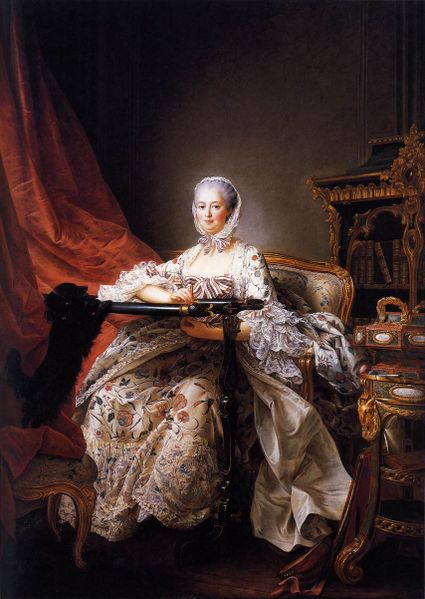Ten days from now a new exhibition about Madame de Pompadour will open at the National Gallery. In anticipation, this week’s choice of picture is one of the star exhibits of the show: Hubert Drouais’s stunning portrait of “La Pompadour”, completed at the very end of her life, in 1764.
Louis XV’s favourite mistress is shown in an informal and intimate pose, busy at her needlework. She looks up as if to welcome an expected guest: the king himself, perhaps, arriving by the private staircase that connected their apartments at the palace of Versailles. She has her favourite spaniel, Mimi, for company. Madame de Pompadour was very fond of Mimi, as records of her household expenditure attest. Not long after acquiring him she spent 530 livres (considerably more than the annual wages of a Parisian stonemason) on gold-plated dog-collars embossed with her coat of arms. But he was included in the picture for symbolic as well as sentimental reasons. He stands for his mistress’s devotion to her King, the canine emblem of her absolute fidelity. There are probably no entirely innocent details in Drouais’s painting, which is anything but the artless snapshot of domestic life which it might at first glance seem to be.
Jean-Antoinette Poisson was born in Paris in 1721 into a well-to-do bourgeois family. Her father was a purveyor of food to the royal armies of France, although he may not actually have been the man who sired her. Her mother took many aristocratic lovers and the lifelong interest shown in Jean-Antoinette by one of them, the high financier Charles-Francois Lenormant de Tournehem, created the suspicion that he was her real father. After the unfortunate Monsieur Poisson’s financial ruin, it was Tournehem who took charge of Jean-Antoinette and gave her a fashionable and expensive private...


